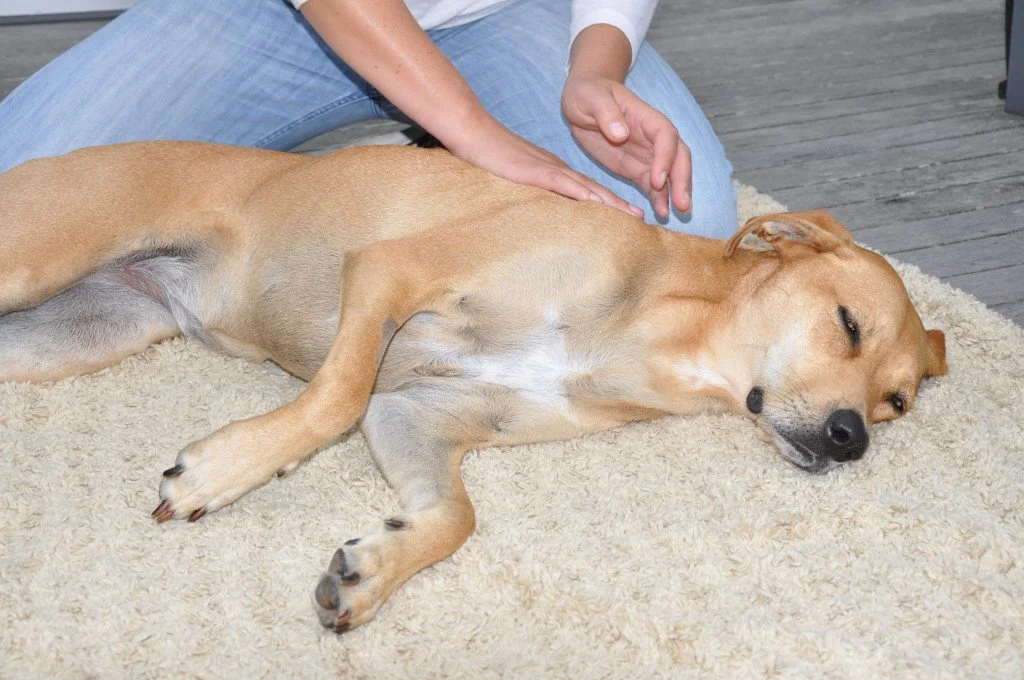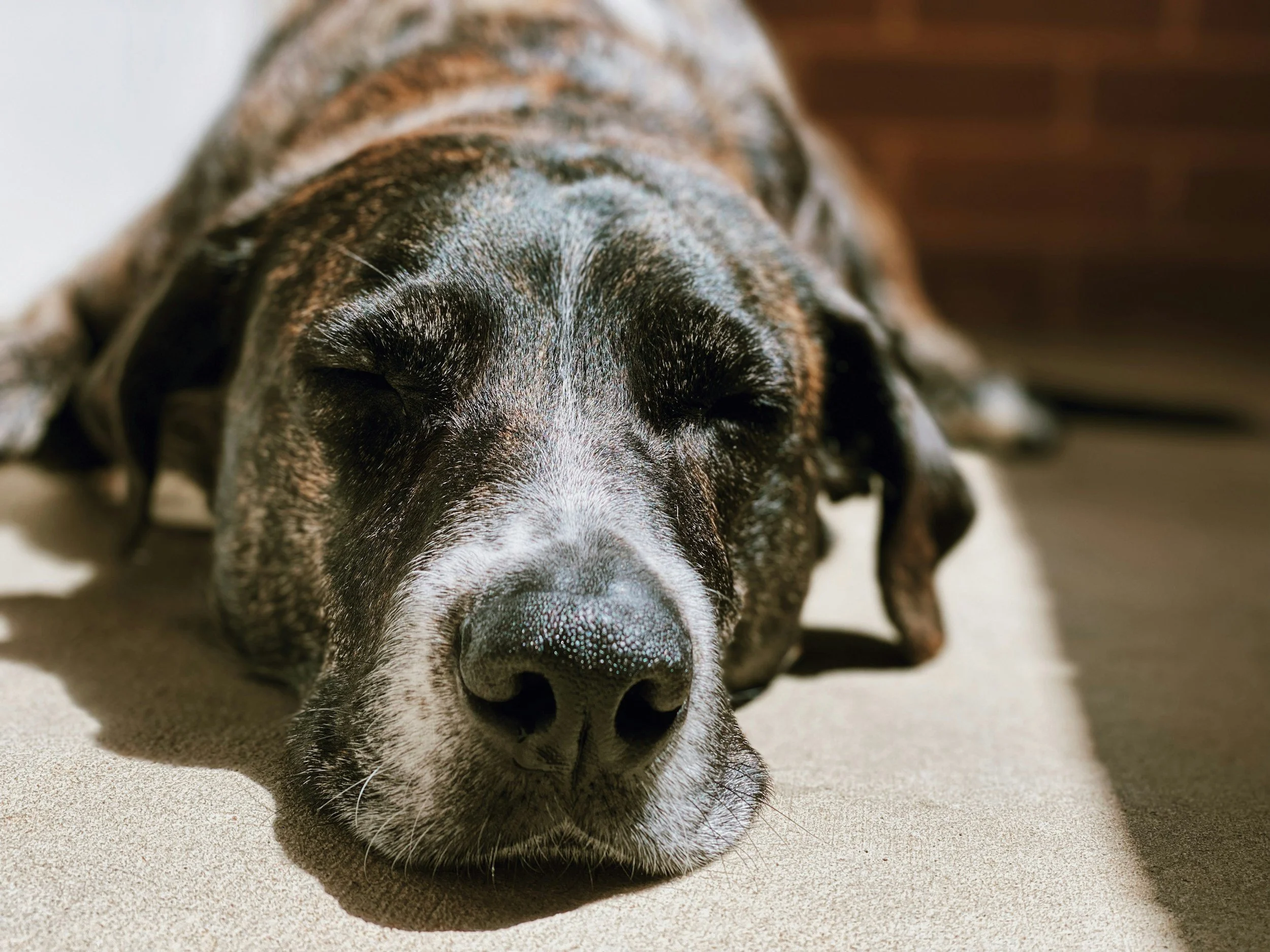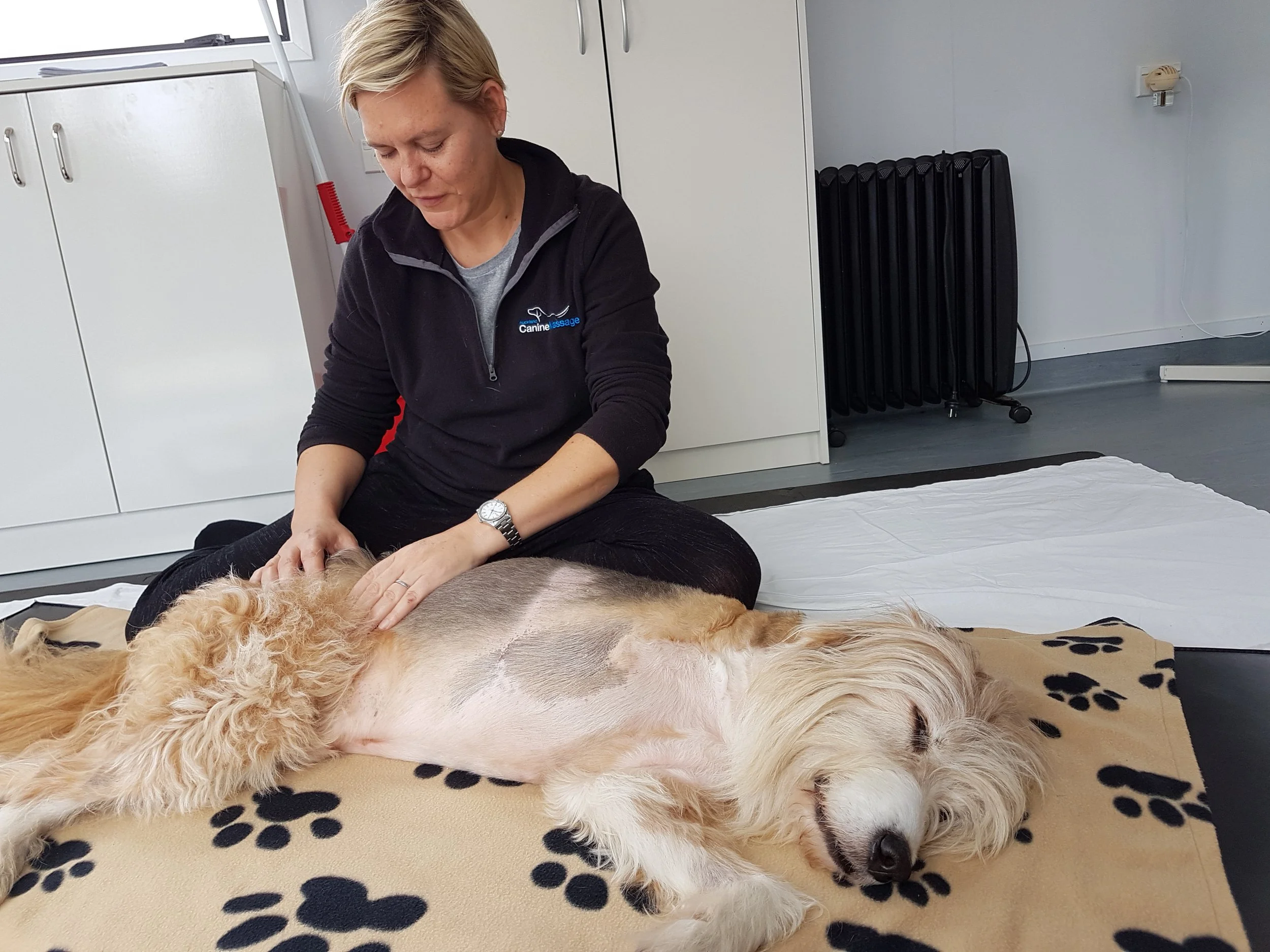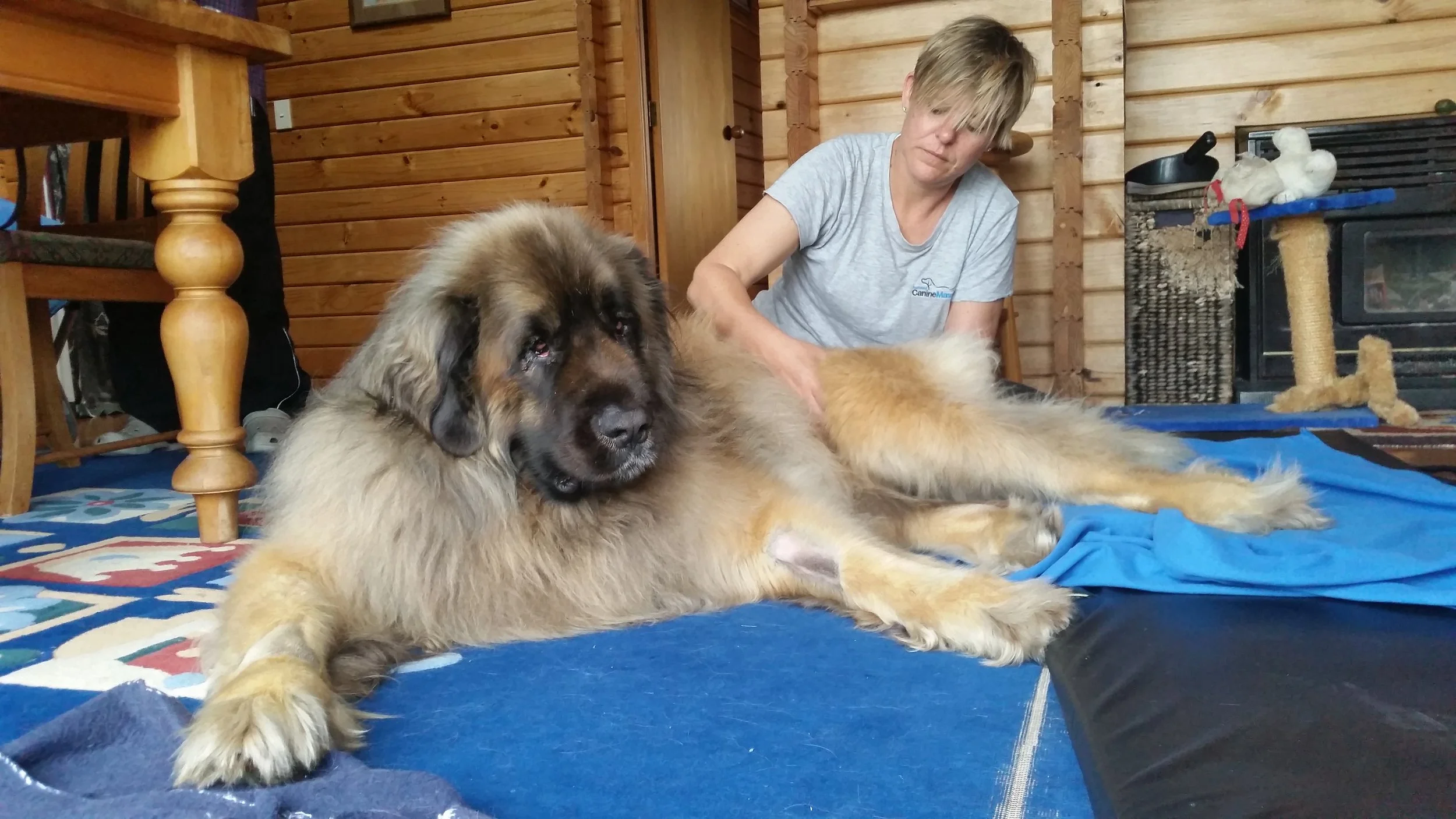
Helping your dog move better, feel better, and enjoy life more.
Hi, I’m Helen, a certified Canine Massage Therapist based near Barcelona. Whether your dog is stiff, recovering from injury, or just needs a little extra care, I’m here to help.
Canine massage is still a relatively young concept, but in the equine world massage has been around for a while, and for us humans Hippocrates wrote about it back in 460BC
Whether your dog is big or small, young or old, injured or anxious, has all four limbs or not, massage will be beneficial.
What is therapeutic massage exactly?
Massage is touch with intent and is the manipulation of all of the soft tissue in the body. Using a variety of techniques, massage has lasting physiological and psychological benefits.
Therapeutic massage feels different to a dog than normal petting. Some may take a while to settle into their massage whereas others take to it immediately. Often they will move around mid session - have a drink, a shake or a stretch. Sometimes their minds are so active that they may need to chew something while they are receiving massage and its only afterwards that they truly relax.
Whatever their response - low stress handling is the key, no restraints are used and we go at the pace of the dog.
Benefits of canine massage
In Their Golden Years
Some dogs are considered geriatric from five or six years of age. Senior dogs can have a number of health problems, most commonly arthritis.
Regular massage can help alleviate the discomfort and stiffness associated with conditions of this nature and helps them to move more freely.
Massage enhances quality of life more generally.
During Rehabilitation
Dogs benefit from massage when recovering from an injury or from surgery. Massage helps reduce pain, improves circulation and speeds the healing process. It also assists in releasing the toxic effects of anesthetics.
Used in conjunction with veterinary care and often alongside other therapies like hydrotherapy or physiotherapy.
Pain can make a dog touch sensitive so it is essential to move slowly and to gain trust.
For Ongoing Maintenance
Regular massage relieves sore muscles, removes knots and maintains general wellbeing.
Whether your dog is an athlete, a weekend warrior or a couch potato, they often carelessly push their bodies and knock themselves, but if they feel a headache for example, they can’t take a headache tablet like we can.
In a relaxation massage the techniques used will help the dog feel calmer and improve sleep.
Palliative Care
It is heartbreaking to receive a terminal diagnosis for your best friend.
Massage during this time is about helping your dog feel comfortable and promote a sense of calm and wellbeing.
Approval from your vet or vet specialist is essential.
To Build Trust
Dogs can bring a feeling of safety to dogs who have been rehomed, or are stressed / fearful or anxious.
Some of these dogs may be in physical discomfort, others may have psychological trauma.
This type of therapy supports behaviour training and helps to calm the dog.
Before or After an Event
A pre-event massage prepares the dog for the event as it warms the tissue by stimulating the circulation. It decreases muscle tension and increases the flexibility of tight muscles, thereby reducing the chance of injury.
A post event massage aids recovery from the activity as it helps reduce any muscle soreness or stiffness.
Consider the fact that an ‘event’ may be a walk around the block for a senior or geriatric dog.







